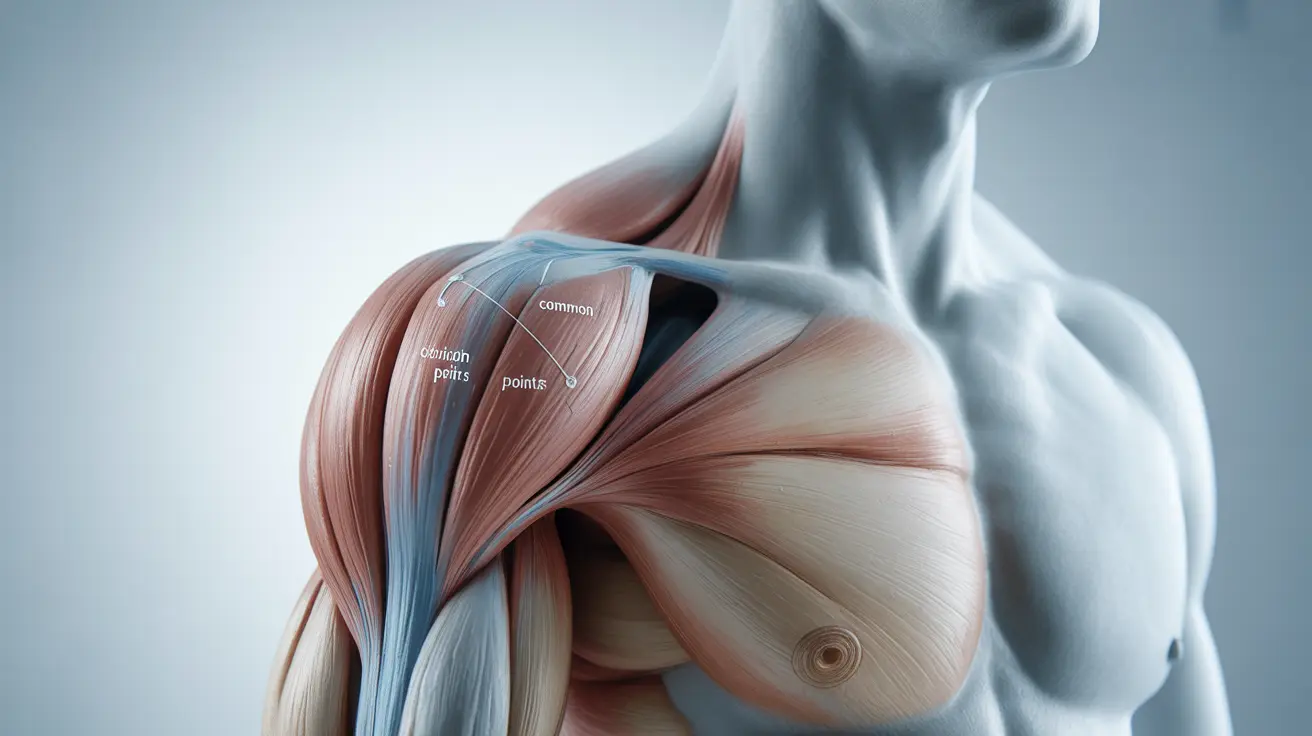Deltoid pain can significantly impact your daily activities, from basic arm movements to athletic performance. The deltoid, a major shoulder muscle responsible for arm movement and stability, can become painful due to various causes ranging from simple overuse to more serious injuries. Understanding the root cause of your deltoid pain is crucial for effective treatment and prevention.
This comprehensive guide explores the common causes of deltoid pain, effective treatment options, and preventive measures to help you maintain healthy shoulder function. Whether you're an athlete, office worker, or someone experiencing unexpected shoulder discomfort, you'll find valuable information to address your concerns.
Common Causes of Deltoid Pain
Deltoid pain typically stems from several common sources:
- Muscle strain from overexertion
- Repetitive motion injuries
- Poor exercise form
- Direct trauma or impact
- Shoulder impingement syndrome
- Rotator cuff problems
The nature of your pain can help identify its cause. Sharp, sudden pain often indicates an acute injury, while gradual onset of discomfort might suggest overuse or poor posture. Understanding these differences is crucial for proper treatment.
Identifying the Type of Deltoid Pain
Muscle Strain vs. Tendonitis
Muscle strain typically presents as immediate pain during activity, with possible swelling and tenderness. Tendonitis, however, usually develops gradually and causes pain during specific movements, particularly when raising your arm.
Signs of Serious Injury
Watch for these warning signs that may indicate a more serious condition:
- Severe pain that doesn't improve with rest
- Significant swelling or bruising
- Limited range of motion
- Weakness in the arm
- Pain that persists for more than a few days
Effective Home Treatment Options
Many cases of deltoid pain can be managed effectively at home using the RICE method:
- Rest: Avoid activities that cause pain
- Ice: Apply cold packs for 15-20 minutes every 2-3 hours
- Compression: Use an elastic bandage to reduce swelling
- Elevation: Keep the shoulder elevated when possible
Over-the-counter pain relievers like ibuprofen or acetaminophen can help manage pain and inflammation. However, these should be used as directed and not as a long-term solution.
Therapeutic Exercises and Stretches
Once acute pain subsides, gentle exercises and stretches can help:
- Pendulum stretches
- Wall slides
- Doorway stretches
- Resistance band exercises
- Range-of-motion exercises
Start slowly and increase intensity gradually. Stop any exercise that causes pain and consult a healthcare provider if discomfort persists.
Prevention Strategies
Prevent future deltoid pain by:
- Maintaining proper posture
- Using correct form during exercises
- Taking regular breaks during repetitive activities
- Gradually increasing workout intensity
- Performing regular shoulder stretches
- Strengthening supporting muscles
When to Seek Medical Care
While many cases of deltoid pain improve with home care, certain situations require professional medical attention. Consult a healthcare provider if you experience:
- Severe pain that limits daily activities
- Pain lasting more than two weeks
- Signs of infection (redness, warmth, fever)
- Numbness or tingling
- Weakness in the arm or hand
Frequently Asked Questions
1. What are the most common causes of deltoid pain and how can I tell if I have a muscle strain or tendonitis? Muscle strain typically causes sharp, immediate pain with possible swelling, while tendonitis develops gradually and causes pain during specific movements. Common causes include overuse, poor form during exercise, and repetitive motions.
2. What are effective home treatments for relieving deltoid pain caused by overuse or injury? The RICE method (Rest, Ice, Compression, Elevation) is most effective, along with over-the-counter pain relievers. Gentle stretching and mobility exercises can help once acute pain subsides.
3. Which exercises and stretches can help improve deltoid muscle flexibility and reduce shoulder pain? Pendulum stretches, wall slides, doorway stretches, and gentle resistance band exercises can help improve flexibility and strength. Start slowly and progress gradually to avoid further injury.
4. When should I see a doctor for deltoid pain, and what medical treatments might be necessary for severe cases? Seek medical attention if pain is severe, persists beyond two weeks, limits daily activities, or is accompanied by numbness, weakness, or signs of infection. Treatment may include physical therapy, cortisone injections, or rarely, surgery.
5. How can I prevent deltoid pain if I regularly do repetitive arm activities or play sports? Maintain proper form during activities, take regular breaks, gradually increase workout intensity, and perform regular stretching and strengthening exercises. Pay attention to posture and use ergonomic equipment when possible.




